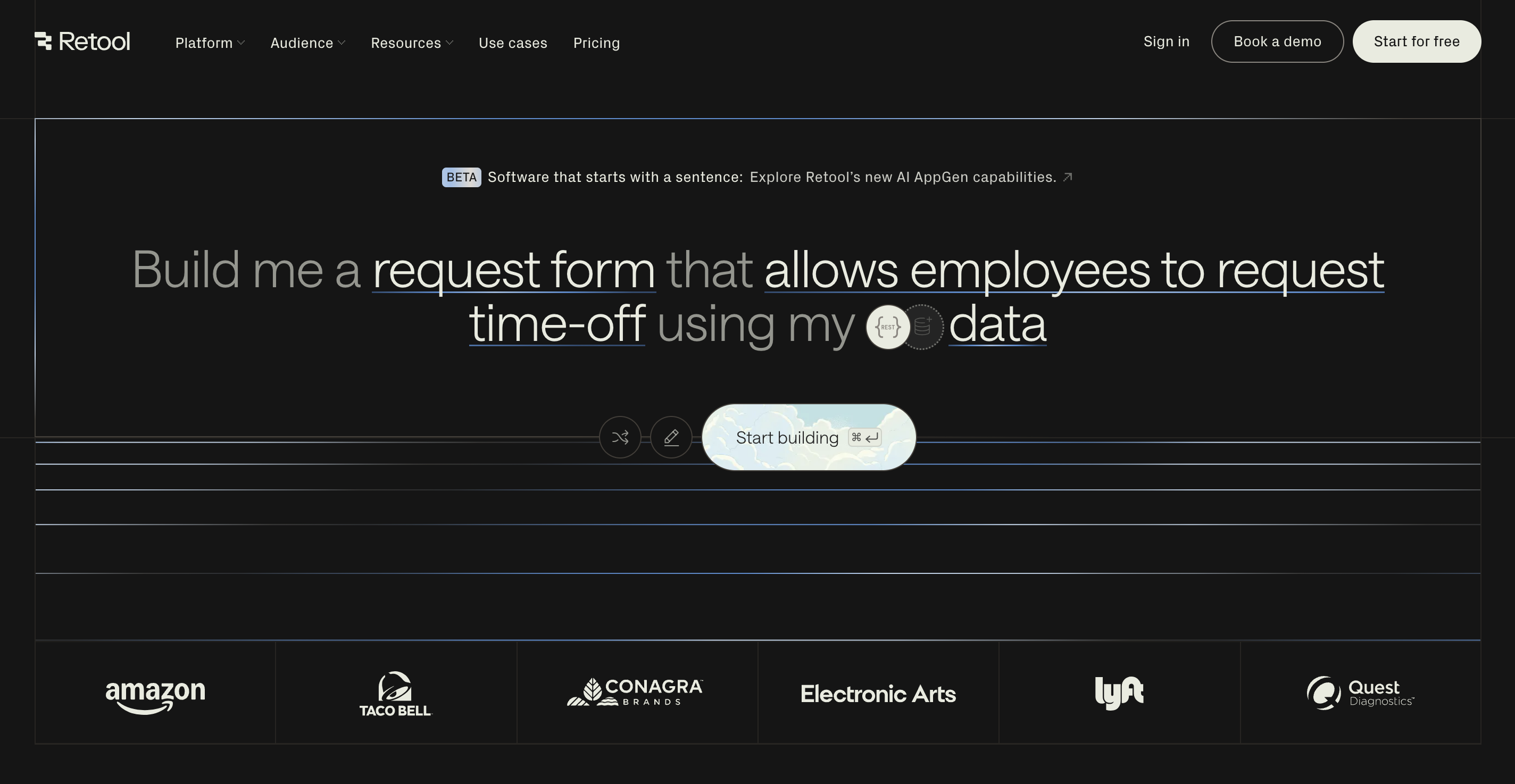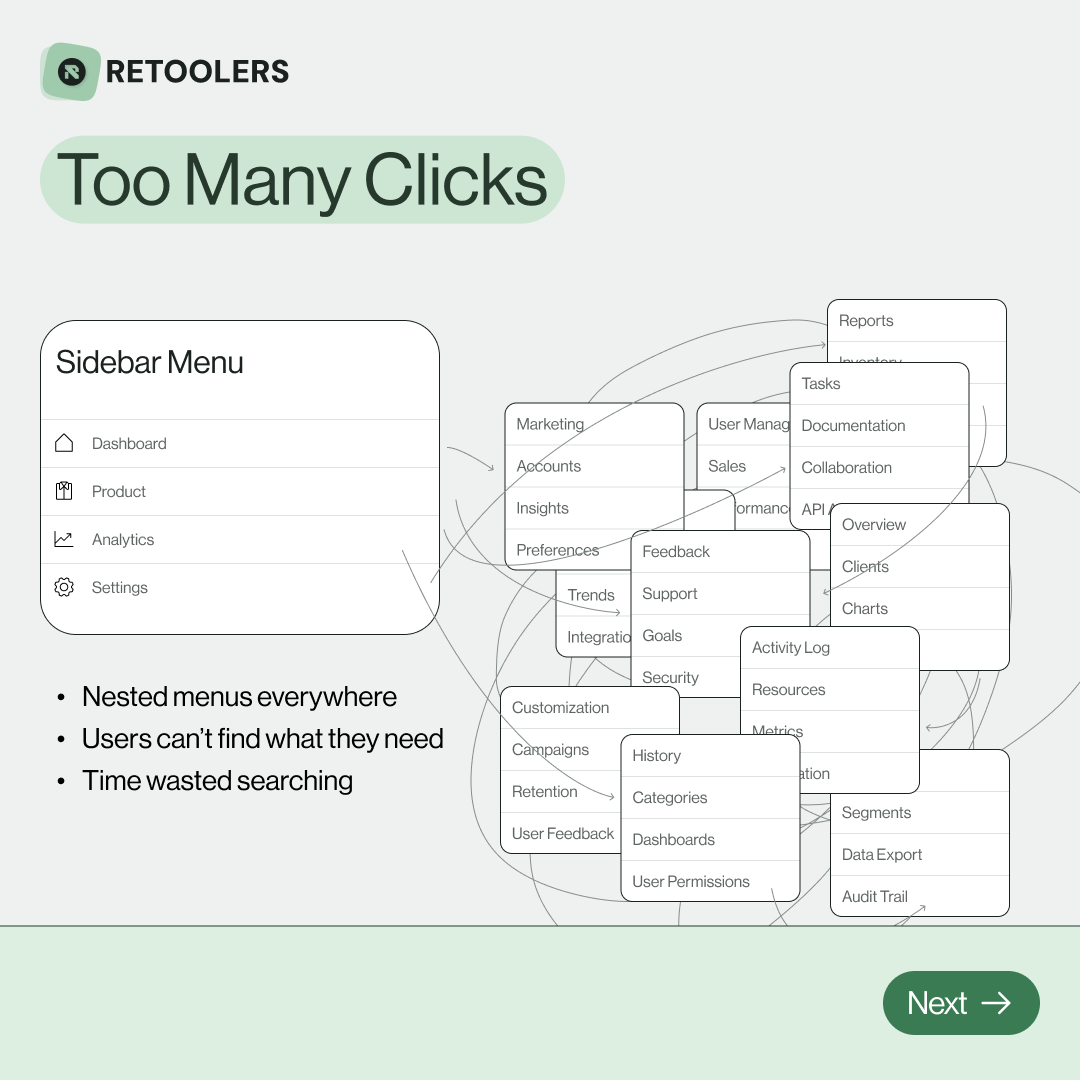Duy Vu
October 11, 2025
•
28 mins read

The email lands in your inbox, subject line: "Quick question from Ops." You know, instinctively, it's not a quick question. The operations team needs a tool. A simple admin panel to look up a customer, check their subscription status, and maybe, just maybe, click a button to issue a refund. "Should be easy," they say.
As an engineer, you know the truth. This "simple" tool involves a frontend framework, authentication, API endpoints, state management, form validation, deployment pipelines, and ongoing maintenance. What could be a 30-minute task for the Ops team becomes a two-week project on the engineering roadmap, stealing focus from your core product. This is the silent tax on developer productivity in almost every growing company.
This is the exact problem that led our team down the rabbit hole of low-code platforms, and ultimately, to Retool. The promise was almost too good to be true: build the exact internal tools you need, in a fraction of the time. But after investing significant time building our most critical internal systems on the platform, we've seen it all—the game-changing wins and the frustrating limitations.
This is not a surface-level overview. This is the definitive retool review for 2025, born from hands-on experience. We will dissect the platform, explore the nuanced retool pros and cons, and give you the unvarnished truth to help you decide if it’s the right investment for your team.
Before we can judge it, we need to understand its core philosophy. Retool is not a "no-code" website builder like Wix or Squarespace. It's a "low-code" platform for developers. It assumes you know how to write a SQL query, what a REST API is, and have a basic understanding of JavaScript.
Instead of taking power away from developers, it aims to supercharge them by abstracting away the tedious, repetitive parts of web app development.

Every application you build in Retool revolves around three core concepts:
Another key aspect often missed in other retool reviews is the deployment model.
This is where Retool earns its price tag and its reputation. The benefits are not just marginal; they are transformative for engineering workflows.
This is the headline feature, and it cannot be overstated.Let's take our example: A "User Management Dashboard."
This isn't an exaggeration. You are consistently 10-20x faster for these types of applications. This frees up enormous amounts of core engineering time to be spent on customer-facing products.
Internal tools often need to talk to everything. Retool acts as a secure, centralized hub. You input your database credentials or API keys once. From then on, builders can use these "resources" to build apps without ever seeing the secret keys. This is combined with robust permissioning.
Many low-code tools hit a wall when you need custom logic. Retool avoids this by allowing you to write JavaScript almost anywhere.
For serious development teams, this is a killer feature. You can sync your Retool apps to a Git repository (like GitHub or GitLab). Every change you make in the UI editor becomes a human-readable commit in your repo. This enables:
No tool is perfect. After extensive use, we've encountered several areas where Retool can be challenging. A complete retool review must be transparent about these pain points.
Retool's pricing is primarily per-seat. While they offer Free and cheaper "end-user" plans, the "creator" licenses needed by developers are where the main cost lies. This model works well for a small, high-leverage team of builders.
However, the cost can become a significant factor when you want to provide tools to a large base of users (e.g., a 100-person customer support team). You must do a cost-benefit analysis: is the productivity gain from this tool worth the monthly per-seat cost for all 100 users? While almost always cheaper than the engineering salary to build and maintain it, it's a visible operational expense that needs justification.
While a simple CRUD app is easy, building a complex, multi-step, performant application in Retool requires learning "The Retool Way."
This is a fundamental trade-off. You are getting speed in exchange for aesthetic control. While you can customize colors, fonts, and even apply custom CSS, your applications will always have a certain "Retool" feel to them. You will not be able to achieve a pixel-perfect, highly-branded, consumer-grade design. For internal tools, this is usually a perfectly acceptable trade-off, but it's something your design team should be aware of.
When a query fails, the error messages are generally good. However, debugging complex JavaScript logic or unexpected behavior in the reactive model can be harder than in a traditional IDE. You don't have breakpoints or a full-fledged debugger. You often resort to console.log() statements within your JS queries or displaying state in a Text component to see what's happening under the hood.
After weighing all the retool pros and cons, our team's conclusion is clear: Retool is an indispensable part of our technology stack.
The sheer leverage it gives our engineering team is undeniable. The conversation has shifted from "we can't, the backlog is too full" to "sure, I can build you a v1 of that this afternoon." It has empowered our operations and support teams with bespoke tools that directly address their pain points, making the entire business more efficient.
Here's our final recommendation:
You should seriously evaluate Retool if:
You should probably look for alternatives if:
The choice is about trade-offs. With Retool, you trade aesthetic perfection and a predictable pricing model for world-class development speed and the ability to finally tackle that endless backlog of internal tool requests. For us, and for many companies like us, that trade has been a spectacular success.
Our verdict is simple: Retool is a phenomenal platform for accelerating internal tool development. However, building truly great applications—the scalable, perform-ant, and complex ones—requires navigating a steep learning curve.
That's where we come in. As a team of professional Retoolers, we help companies bypass this friction to get the maximum value from the platform. If you're ready to build better tools without the trial-and-error, let's talk.
Looking to supercharge your operations? We’re masters in Retool and experts at building internal tools, dashboards, admin panels, and portals that scale with your business. Let’s turn your ideas into powerful tools that drive real impact.
Curious how we’ve done it for others? Explore our Use Cases to see real-world examples, or check out Our Work to discover how we’ve helped teams like yours streamline operations and unlock growth.

🔎 Internal tools often fail because of one simple thing: Navigation.
Too many clicks, buried menus, lost users.
We broke it down in this 4-slide carousel:
1️⃣ The problem (too many clicks)
2️⃣ The fix (clear navigation structure)
3️⃣ The Retool advantage (drag-and-drop layouts)
4️⃣ The impact (happier teams)
💡 With Retool, you can design internal tools that are easy to use, fast to build, and simple to maintain.
👉 Swipe through the carousel and see how better UX = better productivity.
📞 Ready to streamline your tools? Book a call with us at Retoolers.

🚀From idea → app in minutesBuilding internal tools used to take weeks.
Now, with AI App Generation in Retool, you can describe what you want in plain English and let AI do the heavy lifting.
At Retoolers, we help teams move faster by combining AI + Retool to create tools that actually fit their workflows.
👉 Check out our blog for the full breakdown: https://lnkd.in/gMAiqy9F
As part of our process, you’ll receive a FREE business analysis to assess your needs, followed by a FREE wireframe to visualize the solution. After that, we’ll provide you with the most accurate pricing and the best solution tailored to your business. Stay tuned—we’ll be in touch shortly!



